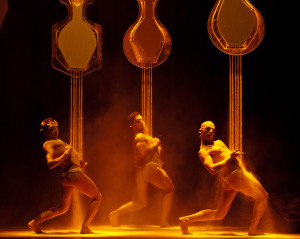The Nelson Music Room on East Duke Campus was bubbling with new and familiar faces, fans of new music, students and friends of the classical art form for this Duke Performances event. Invigorated by the afternoon chill, we gathered in anticipation of a stimulating musical experience. The Ciompi Quartet performed works by Schubert and Tchaikovsky. And they were joined by Jeremy Begbie (piano) for the premiere of Christopher Theofanidis’ 2012 Quintet for Piano and Strings, “At the Still Point.”
Jeremy Begbie, guest artist, is Thomas A. Langford Research Professor in Theology at Duke Divinity School. An accomplished musician, his research interests include the interplay between music and theology. Professor Begbie splits his time between Cambridge and Duke Divinity School. On this occasion he performed the role of pianist.
Christopher Theofanidis, a successful composer and faculty member at Yale University, is a visiting fellow for a collaborative project at the Duke Divinity School, “Engaging Eliot: Four Quartets in Word, Color and Sound.” In addition to his response to T.S. Eliot’s poetry, the composer also derives inspiration from Gregorian Chant and modern physics. Members of the ensemble played excerpts as he introduced his new work.
With less reliance on metaphor, I found myself leaning forward to watch subtle attacks with the bow and closing my eyes as I heard pulsating rhythm suddenly disappear. Or as Theofanidis described, “disruptors” that interfere with emerging patterns built upon simple melodic fragments. Ciompi Quartet members played with sensitivity yielding nuanced textures and hues. It was fascinating to hear sounds that were so new from a quartet of instruments with such a storied history. Every attack, middle and finish of a pitch seemed planned and executed with great attention and care. Begbie gave a commanding performance as well. He was animated and precise at the piano, sometimes leading and at other moments, slipping underneath. The result was a living, woven texture; a magic carpet. Joining them on the stage, Theofanidis congratulated the ensemble on their successful performance. Not all of my neighbors ‘got it’ whispering, “I liked the first piece better.” But the audience, mostly remaining seated, gave a hearty applause.
Searching for a common thread that held the evening’s performance together, I came up with ‘nada.’ Three pieces that span two centuries – they are light years apart musically. Yet Theofanidis opened my ears and suddenly Tchaikovsky’s Quartet No. 2 in F, Op.22 (1874) sounded fresh. The opening dissonance rang clearly. “I feel your pain,” spoke the muse, while I listened. Ciompi’s reading was not heavy or stilted, yet I found it rich and captivating. They also performed Franz Schubert’s Quartet No. 7 in D, D.94 (1811), an early composition with not much substance. But the thrill of hearing a new composition by a living composer made it a rewarding concert.
The concert is part of “Engaging Eliot: Four Quartets in Word, Color and Sound.” Works by visual artists Bruce Herman and Makoto Fujimura will be displayed at Duke Chapel. Speakers (Jeremy Begbie, Richard B. Hays, Michael Moses, Gennifer Weisenfeld and Ellen F. Davis) will discuss T.S. Eliot’s Four Quartets. An opening lecture will take place at Duke Chapel at 7:30 p.m.











